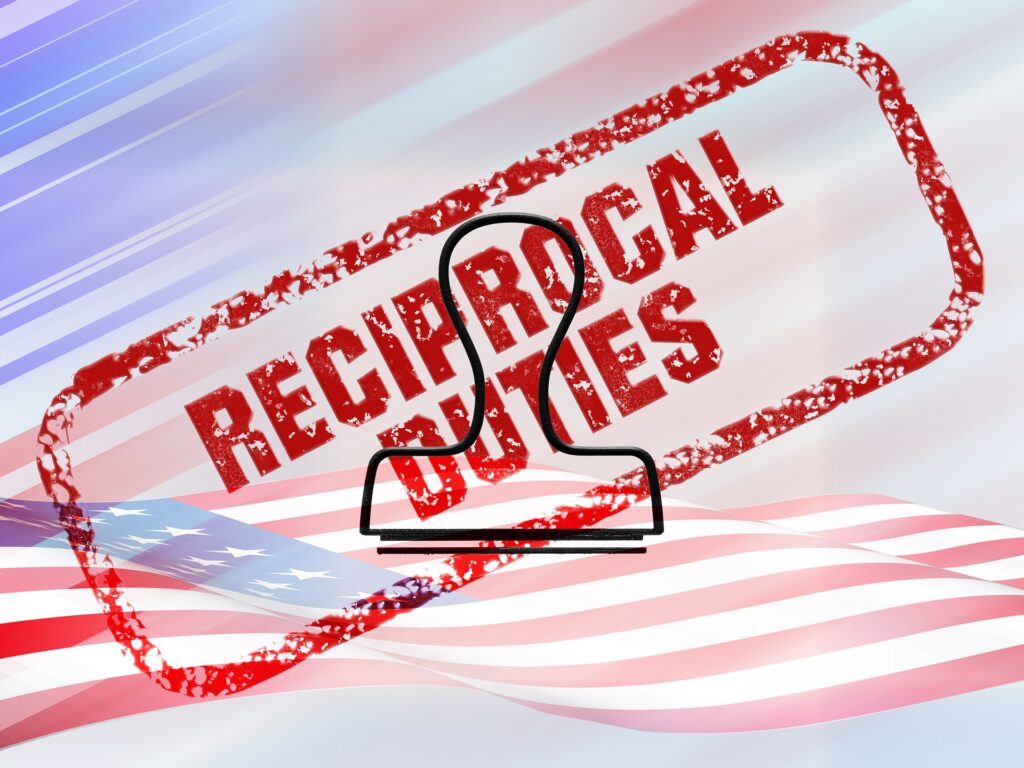Tariffs Bring in Record Revenue For USA: The U.S. economy posted a strong 3% growth in Q2 2025, driven by rising capital expenditures and a shrinking trade deficit. Treasury Counselor Joe LaVorgna highlighted plans to integrate crypto and stablecoins, which could boost demand for U.S. Treasuries. Meanwhile, tariff revenues are projected to hit $300 billion this year, supporting President Trump’s economic strategy. With trade deals gaining traction and innovation leading financial efficiency, the outlook for 3–4% growth in the coming quarters appears increasingly realistic.
US Treasury Eyes Crypto Integration as Growth Surges to 3% as tariffs are Working Very Well
The U.S. economy is defying expectations once again, posting a robust 3% annualized growth rate in the second quarter of 2025, signaling a strong rebound despite ongoing global economic uncertainty and tariff policies. Simultaneously, the U.S. Treasury is actively exploring the integration of cryptocurrencies into the financial system, as explained by Joe LaVorgna, Senior Counselor to the Treasury Secretary, in a recent televised interview.
Crypto and Stablecoin Integration: A Strategic Shift
According to LaVorgna, the Treasury is looking to harness the potential of cryptocurrencies, particularly stablecoins, to modernize and enhance payment systems. Referencing the Genius Act, he explained how the act aims to facilitate stablecoin-based payments which, in turn, would drive increased demand for U.S. Treasuries. The stablecoin market, which is currently valued in the hundreds of billions of dollars, could expand into the trillions, as previously suggested by Treasury Secretary Bessent.
LaVorgna emphasized that this innovation aligns with President Trump’s vision of keeping the United States at the forefront of technological advancement. The Treasury is highly supportive of such efforts, seeing them as crucial for long-term economic growth and financial efficiency.
Tariffs Now a Major Revenue Generator
Meanwhile, concerns that tariffs would slow down the economy appear to be unfounded. July data showed record tariff collections, and projections suggest tariff revenues could hit 300 billion dollars by the end of the year. Even the Congressional Budget Office (CBO), which has historically issued conservative forecasts, estimates that tariffs could generate 3 trillion dollars in revenue over the next decade.
Addressing a common criticism, LaVorgna reiterated that the tariffs are not inflationary, echoing the administration’s stance. He argued that tariffs are working exactly as intended—not only leveling the playing field for U.S. industries but also incentivizing foreign investment and generating revenue without burdening American consumers with higher prices.

Trade Deficit Shrinks and Capex Booms
One of the key drivers of the strong second-quarter growth was a substantial improvement in the U.S. trade deficit. LaVorgna noted that this trend is likely to continue as a result of numerous trade deals pushed through by President Trump. Recent agreements with the European Union and Japan are already yielding results in the form of increased foreign capital flows and market access.
Another major contributor to the GDP surge was a 5% growth in capital expenditures (capex) during the quarter. This marks the fastest pace of capex growth since the second half of 2011, signaling renewed business confidence and long-term investment. LaVorgna even suggested that the final numbers might be revised upward, indicating an even stronger economic performance.
Looking Ahead: 4% Growth Within Reach?
With 3% growth now confirmed for the second quarter, optimism is rising for the remainder of 2025. Stuart Varney, during the interview, questioned whether the fourth quarter could see 4% growth, and LaVorgna didn’t dismiss the possibility. Citing the productivity improvements under President Trump’s administration and the potential efficiency gains from crypto integration, he said that the U.S. economy is well-positioned to grow faster than it did over the past four years.
He further pointed out that in 2019—just before the pandemic—growth was running close to 3.5%, and there’s no reason similar or better performance can’t be replicated in the current environment.
Conclusion: All Engines Firing
The U.S. economy is currently benefiting from a multi-pronged strategy that includes tariff-driven revenue, improved trade balances, resurgent capital investment, and forward-looking innovation in digital finance. With strong leadership from the Treasury and White House, the administration is confident that these strategies will deliver long-term growth, improved living standards, and continued global economic leadership.
The message from Washington is clear: this is a new era of economic strategy—one that combines traditional revenue mechanisms like tariffs with cutting-edge innovations like stablecoins. As the second half of 2025 unfolds, all eyes will be on whether the momentum continues and the promise of sustained 3% or even 4% growth becomes a reality.
Disclaimer:
The information provided in this article is About Tariffs for informational purposes only and does not constitute financial, investment, or legal advice. The views expressed are based on publicly available sources and statements made by government officials. Readers are advised to conduct their own research and consult with professional advisors before making any financial decisions. The blog does not take responsibility for any actions taken based on the content presented.

